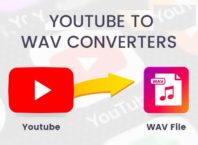Contents [show]
Chromecast, Roku, and Fire Stick are similar, and all have strong streaming abilities.
Looking to join countless other cable cutters?
Streaming media has revolutionized how many of us watch television and movies. For the first time, we can have access to huge media libraries on demand. But if you haven’ used a streaming device before, you may not know which is best.
We are here to help. Read for our review of popular devices to find the media streamer that is best for you.
What are Streaming Sticks?
A streaming stick is a small, portable compact device you can plug into your TV port. Once it’s plugged in, you can stream a range of movies, TV shows, and music. A little time setting it up will take you a long way.
To get access to these, you’ll have to subscribe to a streaming service like Netflix, Hulu, Disney+, or HBO Now streaming. There are a ton on the market, but Chromecast, Amazon Firestick, and Roku are dominating.
Chromecast, Roku, and Fire Stick are similar, and all have strong streaming abilities. They’ll deliver HD video streaming through your TVs HDMI port. Once plugged in, they connect to your Wi-Fi network to bring through clean, crisp picture and sound.
All have basic models that will support your standard HD and there are more advanced models too. Whatever model you have it’s easy to set up and will also match up with Android and iOS mobile apps. There’s plenty of content options for Chromecast and Roku.
The devices do have some big differences though. Roku will deliver its content via channels and apps. Chromecast uses a less centralized method. You can cast from different apps on your laptop, smartphone, or tablet. It has more voice functions too.
We’ll break them down below.
Roku
We’ll start with the Roku Streaming Stick+ which is one of the most respected on the market. It’s an all-round stick that will give you access to your favorite services.
Roku’s edge is that it offers a smaller and more niche service. But it doesn’t compromise the selection of apps you have. You have to subscribe to each service separated, but it’s a handy device when you’re signed up to a few.
Roku Streaming Stick+ is easy to set up. And once done, it’s got a simple, easy to navigate user interface (UI). You connect it to your Wi-Fi, and an on-screen UI pops up on your TV screen. You use that to access your streaming services.
Using your Roku remote control, you can browse through the channel selections. This remote also controls power and volumes.
It’s a handy little device, as you don’t even need a direct line of sight with the stick to use it. If you don’t have your hands free, you can also use the voice control options to search content.
If you’re using more than one Roku device, but you want them to work off one universal setting you can. Roku devices have customizable user sharing setup options.
All you have to do is sign in using the same Roku account on each device and you can share the setting. But, some minor settings and the order of the content will need modifying on each device itself.
Amazon Fire Stick
Again, with the Amazon Fire Stick, you plug it into your TV via a HDMI port. Then it connects to the device’s platform like other sticks.
But Amazon’s Fire Stick is different in the fact it centers around the Amazon bubble. This makes it a great option for those with Amazon Prime access.
It might be annoying news to non-members. But if you’re signed up for Prime Video, Amazon Music, and Amazon cloud, this should be your device of choice.
Compared to Roku, Fire Stick has better performance. If your main question is which is fastest, Fire Stick will win no question. Roku will give access to Amazon Video, but it’s not the main feature like it is on the Fire Stick.
The minute you connect your Fire Stick to the TV, you’re greeted with the available content on Amazon. This includes all it’s music, shows, and movies for free, to rent or to buy. By default, it’ll also link to your Amazon Prime account.
The Fire Stick will offer competitor services like Apple TV+ and Netflix. Alexa is also integrated into your remote so you can use your voice to search with ease. This function works in the same was as Amazon Echo. This means you can even ask it for the news, weather, and control your smart tech.
And if you need an extra bonus, Amazon also lets the Fire Stick be portable. You can log in using room details to connect with a hotel’s Wi-Fi network. So when you’re away from home, you can bring all that great content with you!
Google Chromecast
Apart from the Fire Stick’s Amazon focus, Roku and Fire Stick are pretty similar. In contrast to this, Google Chromecast works completely different to both those options.
Chromecast doesn’t bring up an interface straight onto your TV like the other two. What you do is use it to connect to your laptop, tablet, or smartphone to then play their content through your TV.
In its basic sense, it “broadcasts” your device’s video and audio content to your TV. As long as your app has compatibility. You can even get games that are compatible, but at the moment they’re few in number. But with this setup, your device becomes the remote control.
A great Chromecast feature is you can broadcast right off your laptop or computer. Using Chromecast’s Plex support you’re you can access your laptop or computer’s media to broadcast.
With Chrome as your browser, you can broadcast pretty much anything from there too. So out of the selection, Chrome is right at the top for multi-functional purposes.
When it comes to speed and processing power, Chromecast can hold its own. But, the performance you get will depend on the capabilities of the device you’re using. If you’re using a slow device, your Chromecast experience will be similar.
The Best Media Streamer For You
Most services are available on all these media streamer devices, so the real choice comes down to ease od use and streaming quality. If you are already used to the Amazon ecosystem and Alexa, then a fire stick will probably be the easiest device for you to use. If Google is your ecosystem of choice, then the Chromecast is a no-brainer.
If you found this article useful, be sure to check out our other blog posts.












